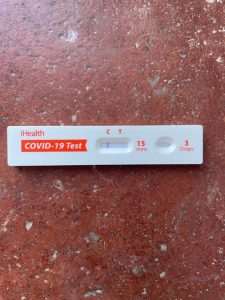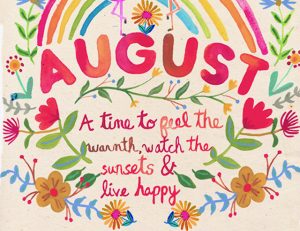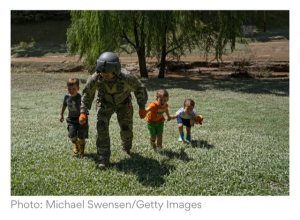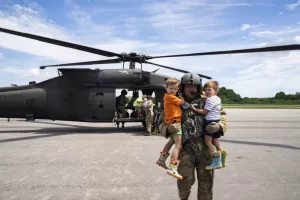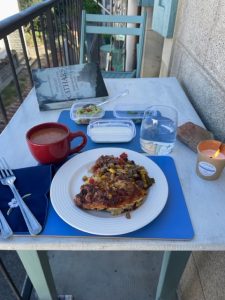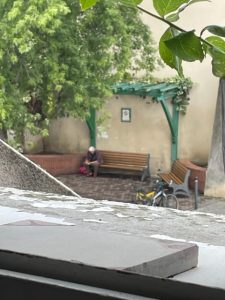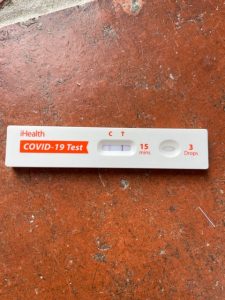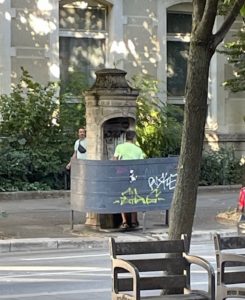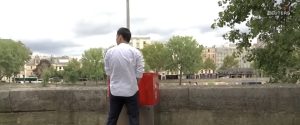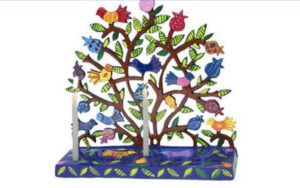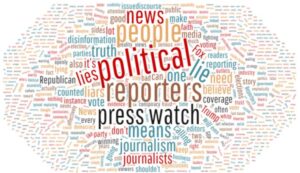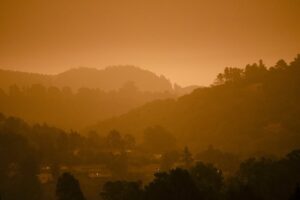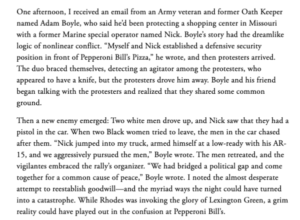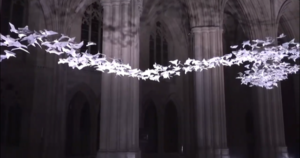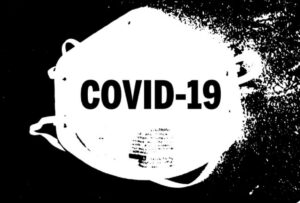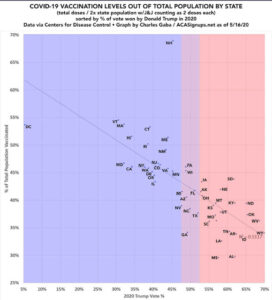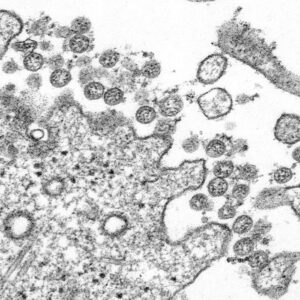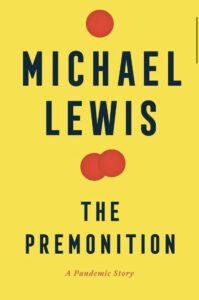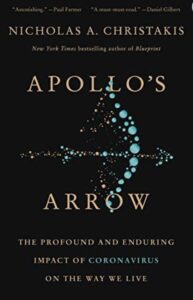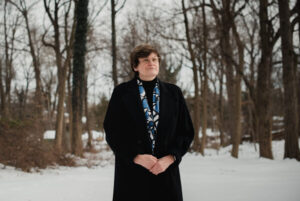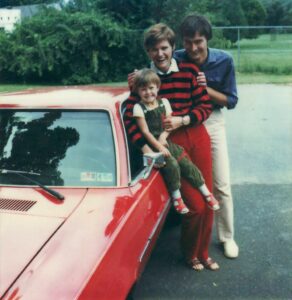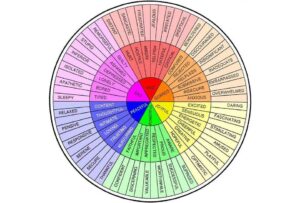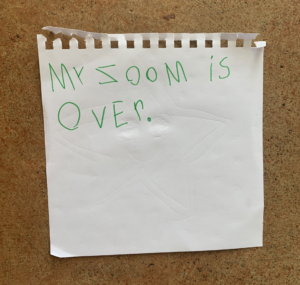COVID
Dayle in Limoux – Day #27
August 1, 2022Waldensian symbol Lux lucet in tenebris, “A light shines in the darkness.”
Isn’t this so beautiful?! Discovered this Waldensian symbol reading and researching the Languedoc/Occitanie region of France. The Waldensians were an ascetic movement within Western Christianity started in the 12th century before the Reformation. They embraced poverty and simplicity, and believed many of the Catholic clergy were unworthy due to their associations to wealth, divinity, and power, and claiming to be ‘divine communicators with God.’ They were pacifists and believed people should have the right to read the Bible for themselves. So, of course, they were deemed heretics, even though they followed the gospel and believed followers should live as apostles. They were persecuted and massacred throughout the centuries. One particularly horrific slaying took place in 1655 in Piedmont, Italy, bordering France. Thousands were brutally murdered and later inspired John Milton to write a sonnet titled, ‘On the Late Masacre in Piedmont.’
‘…even them who kept the truth so pure of old,
when all our fathers worshiped stocks and stones;
forget not: in thy book record their groans…’
The historical account of the massacre is harrowing, and very very difficult to read. Dogma has always served us so well, hasn’t it.
—
So this happened today. :)
Day 8. I’m going to test again in the morning to confirm it isn’t a false negative. Ten days are what many epidemiologists are recommending to prohibit infecting others. The CDC in the U.S. is still promoting five days without a negative test before recirculating. Pas bon. I felt better on day five, but. I was still positive. How did I know? Because I t e s t e d. And then a bit of a relapse on day seven. If I was out and about, no doubt I could have infected other people. Numbers are going way up again, while noticing many people walking around with seemingly heavy colds, coughing and congestion. How many of those are Covid +? Most likely, quite a few. My bout started with an intense sore throat and the last symptom to abate.
Mask.
Distance.
Keep the colds at home.
T E S T.
And Power Path says it could be a bumpy ride.
Courage is for moving forward into your next step.
Determination is for doing whatever it takes to follow through.
Flexibility is for adjusting and refining as needed during this erratic and unpredictable time. It is a good month to plan ahead but with adjustments when necessary.
The proactive resiliency we hopefully ended up with last month leads us into the challenges of August beginning with a tension created by seemingly opposing influences, pushing and pulling and forcing decisions we may not feel ready for. Tension can be a proactive energy that fuels change and inspires you to action. We need to be careful during these first days not to act out of reaction but to consider our bids for power carefully and practically. Decisions and intentions need to come from our own intuitive truth and from the emotional intelligence of your heart. If you overthink or obsess, you will only add to the potential confusion and possibly lose out on a good opportunity.
[You can read more at thepowerpath.com.]
Tomorrow, the journey begins…again. Ten day Covid interlude, ready for some pre-adventure planning. So much to explore! And learning loads about the layers of deep history in this magical, beautifully heretical region of France. The energy is palpable, signaling constantly, ‘Healing the Universe is an inside job.’ [Mindwalk, Le Mont-Saint-Michel.] Another remarkable creation from this area deep in the south of France, the Troubadours, or if female, a Trobairitz. They were performers of Old Occitan lyric poetry, mostly about chivalry and courtly love. The town of Puivert welcomed the Troubadours in the 12th century and at The Chateau de Puivert, still standing although badly damaged after the Albigensian Crusade.
It’s spectacular. Found some Occitanie Troubadour music today.
Here’s a listen.
Bonne nuit.
❁
Dayle in Limoux – Day #26
July 31, 2022Kentucky
The devastation, as many all over the planet are learning, is awful. It will take weeks, months, and years to salvage and re-build in Kentucky from historic flooding there; some will not be able to afford that privilege, having lost everything, and having so little to begin. My source from France has been following Appalshop. I have been connecting with them for years after discovering their work through research I was doing for my inquiry, being instantly connected to their purpose to not only archive and document life in Appalachia, but to teach and connect and serve. They do this lovingly through film and music, radio, video and other media. Their’s is an idea I deeply wanted to see emulated in many communities across the United States. I remember talking to one reporter specifically about it in Sun Valley, Idaho. Today, a note from them…
‘Dear Appalshop Community,
To say the past few days has been overwhelming would be an understatement. We have felt immense grief and sorrow, pain and fear, and a bone-deep dread of discovering the true toll of these floods on our building and our archive. But we have also felt incredible gratitude for all the love and support that has poured out on our behalf and on the behalf of our community.
Our recovery begins, and it will take weeks, months, even years in some cases. When the floodwaters first receded, we discovered that our apple tree that’s planted on the grounds beside our beloved shop was still standing with its young roots intact. Despite record floodwaters of over twenty feet, our little apple tree still stands, bearing fruit and hope.
Thank you all for your kindness and your willingness to come together for us and for the Appalachian community. There are no words to express how deeply we love and appreciate all of you.
“In the essential prose
of things, the apple tree
stands up, emphatic
among the accidents
of the afternoon, solvent,
not to be denied.”– excerpt from “The Apple Tree” by Wendell Berry
In solidarity,
Appalshop’
They have also organized a flood support link:
‘Please continue to share our resources page at appalshop.org/floodsupport. We’ve managed to raise thousands in direct aid and get immediate help to so many folks in need thanks to our community, and the needs will continue in the days and weeks ahead.’
Before the flood.
‘Appalshop started as a film workshop in 1969, and 50 years later we’re still documenting and revitalizing the traditions and creativity of Appalachia.
We tell stories that commercial industries don’t tell. We challenge stereotypes with Appalachian voices. And we do it all with artists who are from and committed to this region.’
Two sweet rescue photos…wearing their little rain boots.
Sgt. Maj. Tim Lewis of the Kentucky National Guard escorts three boys to a helicopter for evacuation from an area inundated by floodwater.
Reportedly, crews have made more than 1,200 rescues from helicopters and boats.
I am testing again tomorrow. Hopeful for just one of those little lines. Still coughing and a sore throat, but the congestion is way better. I haven’t had an appetite, just drinking tons of fluids. If I could get money back on all my recyclables, I might be able to purchase a small Citroën. And today, the kindness of new acquaintances from Limoux who sent me a message saying they have some food for me they made, this cold tomato soup (vitamin C!), and an incredible Chile relleno casserole. Are you kidding me?! Yes! Please. Unpacking their goodies after they left them for me downstairs, the aroma, just looking at it (!) encouraged hunger pains. :) Margot and Fred, you are the best French friends une fille Americaine could ever dream! It must have been mana because I thought I died and gone to heaven. It’s been a lot of days of pain (break, not pain) & fromage. This was welcomed and incroyable! Angels on our path.
Bonne appétit to me! ♡
The woman who owns my building who is in the hospital with Covid is now conscious and out of her coma. Her sister will be with her in Carcassonne on Tuesday and her daughter will be joining next week. Promising developments. She has been so ill. She was vaccinated, but not boosted.
~
Reading & researching lots about Languedoc…langue d’oc, the language of Occitan…John the Baptist…😳…and Lazarus, Cathars, Inquisitions, Gospel of John, more Cathars, Mary Magdaline, the Waldensians and Albigensians, pelicans and wisdom, consolamentum, Zoroastrianism, Manichaeans, Bogomils, sacred geometry, Gnosticism, D U A L I S M (a fan…big time), Descartes, Pope Innocent III, Evil, Rex Mundi. This: “Think how many turns the line of development of forces must have taken to come from the Gospel preaching of love to the Inquisition.” Indeed. And hasn’t stopped.
Reading about Pope Francis’ apology this week, begging forgiveness from the Indigenous People in Canada for the “evil committed by so many Christians.” He cited the cultural destruction and physical, verbal, psychological, and spiritual abuse of children in residential schools run by the Catholic church. Awful, awful history. All I kept thinking in context of this region I’m now living and the medieval history, is that his plea needs to go way back. Waaaaaaay back. Yeah, thinking of you Pope Innocent III and Pope Gregory the (not so) Great. How different history could have unfolded without the Council of Nicaea in 325 CE, and basically Roman Catholics. (The Pope is looking ahead to the 1700th anniversary of the Council of Nicaea, as a “source of unity between Christians.” Nope. Hard no. Christians and unity, kinda not a thing (especially at Nicaea).
So many places to explore and map as Covid explodes and triple digits return. (Have you heard about the new variant beyond BA.5? They named this one ‘BA.2.75,’ nicknamed ‘Centaurus.’ Invades even more rapidly than BA.5. Yay.) We’re supposed to have a booster mid-September that battles the variants a little bit better than the initial boosters and vaccines. With so many people choosing not to vaccinate, as well as not mitigating behaviors, the variants are growing. I saw a clip of people getting on a plane in Amsterdam after seeing Pearl Jam, singing an Eddie Vedder tune…very cute…packed!…sitting on the tarmac, no ventilation…and all I kept seeing was 🦠 🦠🦠🦠🦠🦠🦠🦠🦠🦠🦠🦠🦠🦠🦠🦠🦠🦠🦠🦠🦠🦠🦠🦠🦠🦠🦠🦠🦠🦠🦠🦠🦠🦠🦠🦠🦠🦠🦠🦠🦠🦠🦠🦠🦠🦠🦠🦠🦠🦠🦠🦠🦠🦠🦠🦠🦠🦠🦠🦠🦠🦠🦠🦠🦠🦠🦠🦠🦠🦠🦠🦠🦠🦠🦠🦠🦠🦠. And no masks.
Some books to find after researching today:
Stalked by the plague, ‘The Maiden of All Our Desires’ follows a medieval abbey at a time when monastic life was a refuge for women, “Revolutionary women thinkers like Hildegard Von Bingen, Julian of Norwich & Sor Juana Ines De La Cruz.” Just published in February:
And this book from two researchers who made a discovery viewing a painting and decided to dive in on the backstory of enslaved people during Louis XIV’s reign,
I was able to sit in on a virtual presentation with art history professor Meredith Martin and historian Gillian Weiss as they ‘unveiled an uncommon picture of art and power in the dawn of modern France through a look at the depiction of slavery, in ship and artillery design, militaria, paintings, and prints.’ What’s fascinating is there is little known about maritime enslavement during this time. Love these finds. One of my most cherished research discoveries was made combing through the Archives at DePauw University in Indiana a few years ago, literally stumbling upon something I had no idea existed. Huge. Saving it for my book. :)
~
I have an idea…
Let’s meet for breakfast in Montmartre.
À bientôt.
❀
Dayle in Limoux – Day #24
July 29, 2022Very sad. The woman who owns my building, from whom I contracted Covid, was put on a ventilator overnight. She is not well. Her daughter who lives in the U.K. is making her way to France now. Friends and family are bereft. The rain and clouds, although welcomed, have given a backcloth to many saddened hearts today.
I continue to improve and isolate; was able to practice gentle yoga last night. I’m going to test again in a little while.
“Greater love has no one that this, that someone letdown his life for his friends.”
-Saint Martin of Tours
She waited a long while before her friends joined today. I wish I could have sat with her, there, on the other bench. And smiled.
Practicing presence. What a beautiful art.
Norman Lear, creator of iconic sitcoms like “The Jeffersons,” “All in the Family” and “Good Times,” turned 100 on July 27.
He shared a message recorded by his daughter, one of his ‘breakfast thoughts,’ centered on the joys of living in the moment…practicing presence.
“I guess my breakfast thought at the moment…is the moment…the moment between past and present, present and past, the moment between after and next. The hammock in the middle of after and next. The moment. Treasure it, use it, with love.”
Not writing much today. My heart is too sad for my new French friend. Here are words to the song, her song, Joni Mitchell sang at the Newport Folk Festival with her revelatory journey back to the stage after learning how to sing and play her guitar again. She suffered a debilitating brain aneurysm in 2015 and retaught her self to play after watching her old videos. The last time she sang and played before an audience was on her 55th birthday. She’s 78. It was a moment.
“Rows and floes of angel hair
And ice cream castles in the air
And feather canyons everywhere
I’ve looked at clouds that way
But now they only block the sun
They rain and snow on everyone
So many things I would have done
But clouds got in my way
I’ve looked at clouds from both sides now
From up and down, and still somehow
It’s cloud illusions I recall
I really don’t know clouds at all”
Oh, but now old friends they’re acting strange
And they shake their heads and they tell me that I’ve changed
Well something’s lost, but something’s gained
In living every day.”
Stay safe.
Boost.
Mask.
À bientôt.
✿
Dayle in Limoux – Day #22
July 26, 2022s a d n e s s
Fully vaccinated and double boosted. The psychological effect of testing positive this morning is deep and unanticipated. I isolated for so long the last 2.5 years, no indoor activity, mask always in crowded outdoor spaces and inside, even if only :30. I wore it on my wrist in public spaces so I could be ready to don. No one is wearing masks here. No one. I know who infected me, the owner of my building who lives downstairs, and now she’s in the hospital in Carcarssonne. She was transported sometime after 1 am. She had underlying health issues and I thought her sickness solely emanated from that affliction. I told her not long after I arrived to be so careful, that she didn’t want Covid with her compromised breathing. She didn’t wear a mask and was not boosted. When I took her one of my tests yesterday, it registered immediately that she was positive, could barely talk at this point. Yet, she still procrastinated on medical treatment because she’s adverse to hospitals. We share a common space, although I think I contracted it before Rennes-le-Chateau when she found me sitting at a table in the outdoor space at Place de le Republique. She joined me, sitting close, and we shared an aperitif and some frites (fries). I think her viral load is very high and she most likely should have had treatment weeks ago.
My symptoms are mild (thanks be to science and vaccines), although my throat really hurts. I have congestion and a cough, too. No fever. In France, according to their protocols, I am to isolate for seven days, test, and then if negative, I can mingle again with a mask. I thought about Paxlovid, yet, I have no idea how to get it here. It’s prescription, so it would not be easy. And I’m not at high risk. I may just have to ride it out. I did find out France’s 911 is 112. So there’s that if things get a little scary.
Drinking lots of liquids. Lots. I had just stocked up, so I should be good to go for awhile. I’m just sad.
I had more I wanted to share, not really feeling up to it. Day 22. Isn’t 22 an auspicious number? Mary Magdalene’s Feast Day. “…it carries additional spiritual power, often seen as a sign of good luck or of positive things to come. If you keep seeing 22, it could be a message from your angels that they are helping you to manifest your dreams into reality.” k. I’ll just let that all unfold. :)
Be well.
Stay safe.
Mask.
Bonne nuit.
✿
Dayle in Limoux – Day #21
July 25, 2022When we grant ourselves permission to live the life we want, there is little in the world that can stop us. Our weakness is often just a lack of faith – believing more in the limitations of the world than in the limitlessness of spirit.
-Marianne Williamson
Vérité. Truth.
Sometimes, it takes a long time to unfold, but it will.
B
E
L
I
E
V
E
—
So, what are your feelings about public loos? Annie and I spotted one in Grenoble.
🤭
I said to Annie they need those for chicas, too.
Well, guess what. Reading in The Connexion French newspaper today they are!
Tres chic. But. Will they have a view?
These two shots are from Paris. Wait for it. Another Emily in Paris reference. She’s surprised while talking with her U.S. boss on her cell when a guy behind her starts to urinate publicly in one of those stalls. Couldn’t find a clip. BUT learned they are in Paris right now filming season III. Can’t wait. :)
—
Covid has hit 22 Maison. The owner of my building who lives downstairs is quite ill, trying to determine if she needs to go to the hospital. She absolutely should. I’m trying to encourage her to go. Not yet. She’s from he UK and her French is weak, and it’s difficult for her to communicate with them. Her breathing is quite labored and she’s coughing a lot. She had some health afflictions before I arrived and they have seemingly gotten worse. Now we know why. She found out a French friend tested positive today who she was near on Friday and Saturday. The owner didn’t have any tests so I took her one of my boxes. Almost instantly positive. So I tested, too. Negative. I have cold symptoms now, so I’ll test again tomorrow and on Friday. Drag. I was near her on Saturday. And although outside, we share a common space inside. I’ve been so careful, for so long…masks inside anywhere, and on public transportation, as well as outdoors if there’s a lot of folks, like marches (ourdoor markets). Yet this BA.5 is highly contagious as we know, and cases are going up 50% in France every week. Monkey Pox is also prolific. Humans, we are a mess.
This virus is not going away. Only morphing. And no one…no one…is wearing masks inside or out. Or social distancing. Seemingly, just me. <sigh>
I’m vaxxed and double-boosted, so, hoping for the best.
À bientôt.
❀
Saturday, May 14th, 2022
May 14, 2022Like nature this time of year, abundance is all around you and the possibilities for all of us, together, are bountiful, if only we believe.
H
O
P
E
Not easy, is it. This thing called hope. Collectively, we can grow it together.
Can you feel it?
🌒
Tomorrow, the full moon lunar eclipse. From Lena at Power Path:
The Super Moon marks the bookend of this eclipse window that has brought powerful and unexpected change in endings, beginnings and transitions. Whatever you have set into motion over the last couple of weeks has tremendous momentum and will have far reaching effects. It is important to honor and acknowledge any endings and completions, whether they are initiated by you or not. It is also crucial to focus and place some attention on the space created for new beginnings by those completions. Stay out of any judgment or resentment or martyrdom if what has left your life was not of your doing. Instead, notice what is coming into your life and honor it as part of something new. If you only dwell on what you have lost, you will likely create the same thing for yourself, losing the opportunity to create something new, something that marks an improvement in your life. Be careful what you ask for during this powerful time and make sure it is from your heart and not a calculated thought process.
It is a good time to take action and to refine the intentions you have been working with since the new moon at the beginning of the month. This is a transformational time that can expose issues that need to be addressed, processed and changed. You can also be inspired to manage your obstacles in a new creative way. Be encouraged to think and problem-solve outside the box with a focus on improvement and innovation. Creative thinking will be rewarded with new solutions to old problems.
Whatever else happens, keep your energy light, your vibration as high as possible and your thoughts positive. Bring beauty into your life and fill yourself with inspiration and the intention to move forward in a positive way no matter what.
‘In the spiritual Universe, we only keep what we give away.’
-Marianne Williamson
J
O
Y
‘I would not sacrifice my soul / for all the beauty of this world. / There is only one thing / for which I would risk everything: / an I-don’t-know-what / that lies hidden / in the heart of the Mystery.’ -John of the Cross
Noche Oscura del Alma
‘If we stay the course and go through this [dark night], we find our way deeper, deeper, deeper, and then we can see that at any given moment in these ways, through marital love, through parenting, through solitude, through oneness with the world, through silence, through service to community, through art, in any given moment, there can come flashing forth our unexpected proximity to this mystical dimension of union.’ -James Finley
C O V I D
Summer Surge
1,000,000 U.S. (at least) – – let’s lower the flags and move on.
Yet, the virus continues to mutate and infect, and kill. In our small community, zero masks indoors. As if Covid is…gone.
“COVID-19 Rates Rising as Super Contagious Variant Gains Ground”
KRLD News Radio 1080
With Dr. Peter Hotez, Baylor College of Medicine, with his own breakthrough infection.
“This new BA.2.12 sub-variant is the most transmissible one we’ve seen to date and it’s up there with measles in terms of its reproductive number and its ability to infect. So when you have something this transmissible, even a good vaccine is going to be tough to fight.” Any individual shedding that virus is likely to infect 12 other people.
BA.2.12 is now poised to become the dominant variant in the United States. Dr. Hotez says prior infection from Omicron doesn’t offer much in the way of immunity.
“I have to believe this coming summer we’re going to be vulnerable yet again. Don’t screw around. Get vaccinated, get boosted and get your kids vaccinated.”
In Texas? The testing positivity rate was below 2% in the middle of March. Now it’s up to 8.4%. Keeping in mind, many are ‘home’ testing and positive results are not being recorded.
Too few boosted. Too many more will suffer from long Covid complications. And too many more will die.
#
Sunday, February 6th, 2022
February 6, 2022p. 53
“…liberté, égalité, et fraternité triumphed, and here, a place of exchange between English and French thinking, we get to enjoy the spots of peace: literature, friendship, conversation, debate. Long may we enjoy them and may they…instead of guns and grenades…become the weapons of new rebellions.”
p. 49
“The world as we knew it has ended, and it’s time for something entirely innovative.”
From Seth Godin.
In defense of non-interactive media
It doesn’t talk back. It doesn’t beep or update or invite a click. It doesn’t change based on who’s consuming it. It doesn’t interrupt you, and it begs to not be interrupted.
It’s rarer than ever before, and sometimes, we need it.
Agree. Completely. I think all comments across all social media platforms should be muted for six months.We must recalibrate. Let us read, absorb, research…enact media literacy and ease the meanness, vitriol, hateful and polarization with our words. Practice Lectio Divine…contemplative interaction…not words…conversations through meaning and meditation. We need it…indeed. -dayle
From Dan Rather.
We often hear of the tides of history, as if the fate of the world shifts in unison – the rising and lowering of a great sea of fortune. Tides are predictable. They are unstoppable. They are acts of nature. Human affairs, while inextricably tied to planetary forces, are also shaped by the actions we take, and do not take. Our destinies do not move with any great cohesion or coordination. Rather we are more like boats tossed by the accumulation of countless individual waves (to stretch our maritime metaphor), cresting and receding, churning and placid, forceful and gentle. These can be waves that push us backwards, but they can also propel us forward to a better future.
When looking back at the past, it is tempting to see paths as preordained – narratives we neatly tuck into the contextual confines that make them easier to understand. In contrast, the present is always messy. It will only become clearer once we know how it ends, at which point we will be living in a new era of uncertainty.
We can never dismiss the many challenges we face or the threats they pose. They are particularly dire. The list of woes bears repeating and remembering – from the climate crisis, to the ongoing threat to our democratic institutions, to our continued struggle for racial justice, to the threats of war, to the pandemic, and onward.
In the future we may look back and see that one of these forces escalated to a point of even greater dominance, and disaster.
One of the few things I have learned with any certainty over the course of a long life is to be wary of certainty. Those who predict with the most confidence what will happen in the future are often the voices that should be treated with the greatest skepticism. These paragons of certainty invariably are the ones who talk the most and consequently do the least to make a difference.
Substack: Islands of Hope
Both sides…not working now. It’s lazy journalism. -dayle
‘Both sides’ journalism does not always show us the truth
Journalists are bound to tell the truth, not give platforms to positions which are demonstrably wrong in a misguided attempt to be ‘impartial’.
“Flat-earthers are not going to get as much space as people who believe the Earth is round, but very occasionally it might be appropriate to interview a flat-earther. And if a lot of people believed in flat Earth we’d need to address it more.”
The BBC’s director of editorial policy, David Jordan, tried to make a defence of impartiality. Instead, he inadvertently showed us why the dogma is so dangerous.
It’s time to end both-sidesism. For so long, the idea of impartiality has been treated as more a matter of faith than a principle to be debated.
Where does this end? If we’re giving airtime to flat-earthers, then surely Syrian war crimes deniers are entitled to a platform. How about genocide deniers, 9/11 conspiracy theorists, and people who think there’s no climate emergency?
In the UK, the dogma of impartiality led the media to the false equivalence trap during Brexit. Pro-EU campaigners were given their share of airtime, and then the other side said it had “had enough” of listening to experts and fed viewers factually incorrect claims.
On other issues, too, the shrine of impartiality has taken us to dangerous places.
It took the BBC until 2018 to recognise that it wasn’t necessary to host a climate crisis denier to balance a debate about the impending environmental emergency. The BBC briefing note read:
“To achieve impartiality, you do not need to include outright deniers of climate change in BBC coverage, in the same way you would not have someone denying that Manchester United won 2-0 last Saturday. The referee has spoken.”
But that was a long three years ago. Before COVID conspiracy theories and leaders in the UK and US began regularly mixing fact with fiction.
Why is impartiality valued more highly than truth? We know that we’re failing as journalists when around 25 percent of people avoid the news in the UK, and one of the main reasons is because they can’t trust the news to be true.
Journalists are not naive storytellers incapable of discerning fact from fiction.
If we don’t stop giving a platform to things we know are false, how are we going to win back that trust?
Ironically, it’s the BBC that is leading the way in the UK’s fight against fake news: they have a specialist reporter covering disinformation online, and in 2021, they appointed their first health disinformation reporter.
I know what you’re thinking: give them a platform, and then robustly challenge them. Let their arguments crumble in the face of a tough line of questioning. Here’s the danger with impartiality purists: simply repeating false claims – even if it’s challenged – can push people to believe the false statement.
This isn’t a manifesto for throwing impartiality out of the window. We’re not campaigners or activists. We shouldn’t have an agenda.
But we’re also not naive storytellers incapable of discerning fact from fiction. The New York Times and many other publications did readers a service when they called former President Donald Trump’s lies, lies.
Fairness doesn’t mean giving a platform to factual inaccuracies just because they’re popular. That’s what Twitter is for.
There are not always two sides to every story.
Sakhr Al-Makhadhi is Executive Producer for AJ+
Remember reading the paper?
by Scott Simon
NPR
Image: A worker at a San Francisco Chronicle printing plant arranges stacks of freshly printed newspapers in 2007. Its digital version, like that of so many newspapers’, is behind a paywall. -Justin Sullivan/Getty Images
The road to free information and opinions seems to run into a lot of paywalls.
Want to finish reading an article? You can, but only if you subscribe for just $1 for 3 months, which becomes $11.99 a month thereafter, and into perpetuity, until your credit card expires. Even if it’s after you do.
I have a strong, even personal interest in paying journalists fairly. But the cost most people have to pay these days if they want to try to stay informed and enrich their minds with a range of opinions is pretty steep.
It’s become harder to read more than an article or two in most publications, which may no longer be the word. News sites, from The New York Times and The Washington Post to The Des Moines Register, insist you subscribe. So do Ebony, The New Yorker, The Economist, Rolling Stone and opinion journals, including The Nation and National Review, and sports-reporting sites. And of course, there are proliferating newsletters and extra-access-plus plans, as news broadcasters begin their own subscription services. They don’t crave an audience, so much as what they call a “customer base.”
“You can’t do much web grazing of quality content these days without a paywall clanging shut on you,” Jack Shafer wrote last year in Politico. “What delights publishers about subscriptions is what everybody from Amazon to Spotify to the Dollar Shave Club to Netflix love — the annuity-like reliability of steady revenue.”
But the cost of inducing people to subscribe is to make news, information and a range of opinions available to only those who have the means to afford and receive them online. This skews the audience toward what Nikki Usher, a University of Illinois College of Media associate professor, calls the “rich, white, and blue,” as in left-leaning.
The political and social divides, which so many decry, may begin between those who can and those who can’t afford access to a wide range of fact-checked, accurate information.
Disinformation, of course, is utterly free.
Newspapers and magazines often got ink on your fingers. But they were cheap. Anyone with pocket change, rich, poor, students or job-seekers, could buy a copy of a magazine with Princess Diana or Oprah Winfrey on the cover or a newspaper when the headline said MAN WALKS ON MOON, or, yes, HEADLESS BODY IN TOPLESS BAR.
The internet has made news and views of all kinds, from all over the world, available on screens we can keep in our pockets. But so many paywalls have pulled costly shades over those screens.
https://www.npr.org/2022/02/05/1078377406/opinion-remember-reading-the-paper
We need an opportunity to reestablish and recalibrate the purpose and necessity of the Fourth Estate. What should the institution’s moral compass be based on the ideals of the U.S. Founders? The U.S. Founders believed a free press vital to democratic debate. So how did the current contemporary news culture evolve into a climate of disinformation and false news? Further, how did an institution created for public service evolve into an influential economic profit platform more destructive than instructive? Free Press co-founder, author and professor Robert McChesney is an activist for government subsidized non-profit media, a model the United States Founders had encouraged for a free press. He believes the Founders did not “authorized a corporate-run, profit-motivated, commercially driven media system with the First Amendment.” Corporate owned media is complicit in misinformation, and disinformation, for ratings, clicks and profits. This must change. And the change begins with our consumer information behaviors and tech media regulation. Democracy may die in darkness, but right now it’s happening in broad daylight. The pillar of the Fourth Estate is crumbling. -dayle
“Some would say that humanity is destined for self-destruction; that our history of lethal violence towards our own kind has programmed us to be fearful, suspicious, revengeful and greedy; and, despite our modern age, this programming now threatens our well-being on a global scale never witnessed before. But does it have to be this way? Can we not consciously evolve into a different kind of human?”
-Helen Marriott
I propose a journalism renaissance based on spiritual companioning, or homo spiritus, and radical compassion (Khen Lampert), deep empathy for other within democratic social process, a heart-based journalism paradigm in necessary community; a Fourth Estate defined in the third space of spirit, love, dignity, and humanity. -dayle
2021’s end.
December 18, 2021♡
Rilke:
I have seen for some time
how everything changes.
There is that which arises and acts,
kills and causes grief.
[…]
Now it is empty where I stand
and look down the avenue.
Almost as far as the farthest ocean
I can see the heavy
forbidding sky.
Thomas Merton:
When God allows us to fall back into our own confusion of desires and judgments and temptations, we carry a scar over the place where that joy exulted for a moment in our hearts.
The scar burn us.
The sore would ache within us, and we remember that we have allen back into what we are no and are not yet allowed to remain where god would have us below.
We long for the place he had destined for us, and weep with desire for the time when his pure poverty will catch us and hold us in its liberty and never let us go, when we will never fall back from the Paradise of the simple and the little children into the forum of prudence, where the wise of this world go up and own in sorrow and set their traps for a happiness that cannot exit.
Krista Tippet.
On Being.
It remains such a hard, strange time in the life of the world. I cleave as best I can to my “muscular hope,” yet this past year has not lived up to the vision I had for the “beyond” of 2020. It was, I suppose, a dream of moving past the pandemic. Not a return to some old or new undesired “normal,” but at least a page turned, a new chapter opened. We are still, and again, in a liminal time and space — an in-between time of rupture and searching and unmourned losses and so many callings yet to heed, so much change to absorb and propel
Even as I am brokenhearted and uncertain at this juncture in the life of the world, I am ever grateful for the accompaniment you offer me in the mysterious, miraculous ether…
And I am, yes, looking forward to the beyond of this year. I will meet you here again on the other side. I wish you a restorative sacred holiday season, Christmastime, and New Year — and if that is not possible, as much kindness and gentleness toward yourself as you can possibly muster.

Be safe, friends. Mourn. Embrace. Love. Maybe even allow a little bit of hope. ~dayle
Hope is holding in creative tension everything that is with what could and should be, and every day taking some action to narrow the distance between the two. -Parker Palmer
Show us your light.
November 29, 2021‘We enter a season that invites us into the story of the people of Israel. We join them in spirit during their protracted wait for the promised Savior.’
~Cindy Senarighi and Heidi Green
Inhale, I Am
Exhale, Grateful
‘As our Covid months turn into years, we realize that our practice is a long unfolding, an opening into promise.’
~Rolph Gates
Take a deep breath, knowing that what we don’t say can be as powerful as what we do say, thinking deeply about something before making a response—such actions leave room for the spirit to flow, to harmonize our circumstances and move them in a more positive direction.
~Marianne Williamson
Misinformation, Lies, Political Reporting…COVID
September 29, 2021Press Watch mission statement: Political journalism needs a reset
by Dan Froomkin.
Let’s start with the overarching problem: Misinformation, disinformation and gaslighting have become rampant in our political discourse, turning citizens against each other, choking the legislative process, eroding confidence in elections, and, in the age of Covid, literally getting people killed. A striking number of voters are laboring under a series of delusions that make them incapable of rational decision-making. The country is still reeling from a violent attempted coup in the name of a Big Lie – a lie that has essentially become doctrine for one of our two major political parties.
Despite all this, our elite political media recognizes no need for a course change.
Journalists should treat a lie like a virus, for which they are the vaccine, not the spreader. The goal is to quickly fill the news space with the truth so that conspiracy theories have less place to grow.
There should be some, or else what’s the point of fact-based journalism? That means denying serial liars the opportunity to use the media – particularly live media — to spread their lies. That means whenever it’s crucial to quote a liar, warning readers and viewers of their track record. That means interrupting liars when they are repeating a lie. That means demanding retractions, publicly, prominently, and repeatedly. That means openly distinguishing between people who — totally independent of their political views — can be counted on to be acting in good faith and those who can be counted on to be acting in bad faith. Established liars should not be quoted as credible sources. (And they should certainly never be granted anonymity.)
Our very democracy is in danger. You can’t really cover politics and ignore that. It underlies everything.
Idaho Statesman
Idaho legislator urges people to get vaccinated after his mother dies from COVID-19
BY SALLY KRUTZIG
“I think there are people in our political realm who are essentially killing people with misinformation […] at what point was somebody convinced of a lie? Was it the fifth time it was repeated? Was it the 50th time? Was it the 500th time?”
https://www.idahostatesman.com/news/local/community/boise/article254599937.htm
#Idaho
Hyperobjects and the challenges ahead. #MustRead
July 8, 2021I wrote a long essay about a pervasive feeling I have about the future. I do not think we are ready for the complex, existential challenges ahead. -Charlie Warzel
We are not ready.
On the climate crisis and other hyperobjects.
These days, I find increasingly myself caught between the worry that I’m being overly alarmist and the fear that I am stating the obvious.
I felt this most strongly in October 2020. Covid cases were surging; the presidential election was near; the far-right areas of the internet I kept an eye on were vibrating with a dark potential energy. All summer, I watched anxiously as people posted videos online of furious Americans taking to the streets. I listened in on walkie-talkie apps as so-called militia groups attempted to recruit and deploy members. News reports said sales of guns and ammo were surging.
I was seized by a deep, persistent dread that these anecdotal instances of civil conflict were a prelude to something bigger. I interviewed scholars who’ve studied revolutions and shared my fears.
Sept. 30th, 2020:
“Reading this exchange…it’s honestly very surprising to me the extent to which we haven’t seen more Kenosha like events already…”
I struggled — and ultimately failed — to put any of this into words at the time. I didn’t know how to convey these anecdotal stories into something that went beyond projecting my anxieties onto the world via the pages of the New York Times. I felt I lacked the language to proportionally describe my concern. I was legitimately worried about large-scale, sustained violent civil conflict across the United States but, if I’m being honest, I was afraid I’d come off as the extremely online, overly alarmist guy.
And yet, if you did occupy the same spaces as I did in October 2020, the specter of civil conflict would have felt just so incredibly obvious as to almost not be worth mentioning. The world was shut down, everyone was trapped inside and online, and more and more people were beginning to detach from reality. Everyone was miserable and scared and angry. Just look around!
This moment offers a window into the way that traditional conceptions and practices of journalism can break down in extraordinary times. I consider not writing this piece back in October a failure. I wrote plenty of columns around and tangential to this subject, yes. But my job is to look at the world through the lens of information and technology and to describe how those elements shape our culture and our politics. I saw something and I didn’t say all of what I thought, in part, because I couldn’t figure out how to talk about it proportionally. I was also pretty fucking scared: of being wrong, but also of being right.
Was I wrong or right? …Yes? There has not been a series of extended, mass casualty conflicts so far — no Civil War 2. But I also urge you watch this video reconstructing January 6th in full and tell me that my sleepless nights in October were a gross overreaction.
Even now, I struggle to find the adequate word to describe the moment. It makes sense: our 21st century existence is characterized by the repeated confrontation with sprawling, complex, even existential problems without straightforward or easily achievable solutions.
Theorist Timothy Morton calls the larger issues undergirding these problems “hyperobjects,” a concept so all-encompassing that it resists specific description. You could make a case that the current state of political polarization and our reality crisis falls into this category. Same for democratic backsliding and the concurrent rise of authoritarian regimes. We understand the contours of the problem, can even articulate and tweet frantically about them, yet we constantly underestimate the likelihood of their consequences. It feels unthinkable that, say, the American political system as we’ve known it will actually crumble.
Climate change is a perfect example of a hyperobject. The change in degrees of warming feels so small and yet the scale of the destruction is so massive that it’s difficult to comprehend in full. Cause and effect is simple and clear at the macro level: the planet is warming, and weather gets more unpredictable. But on the micro level of weather patterns and events and social/political upheaval, individual cause and effect can feel a bit slippery. If you are a news reporter (as opposed to a meteorologist or scientist) the peer reviewed climate science might feel impenetrable. It’s easiest to adopt a cover-your-ass position of: It’s probably climate change but I don’t know if this particular weather event is climate change.
Hyperobjects scramble all our brains, especially journalists. Journalists don’t want to be wrong. They want to react proportionally to current events and to realistically frame future ones. Too often, these desires mean that they do not explicitly say what their reporting suggest. They just insinuate it. But insinuation is not always legible.
I understand these fears and I feel them myself, professionally and personally. I think anyone who says they don’t feel them is probably lying. In fact, these fears, in the right proportion, make for what we traditionally consider a “good journalist.”
After all, many of the best journalists understand how to balance and factor uncertainty into their work. I don’t want journalists to jump to lazy conclusions. I think a deeper embrace of nuance and uncertainty is necessary not just in reporting, but in all elements of mass media.
That embrace sounds good in theory but it’s much harder in practice. How do you talk about an impending, probable-but-not-certain emergency the *right way*? Can you even do that? Can you get people ready for an uncertain, perhaps unspeakably grim future? Is anyone ready?
These questions have re-entered my brain again as I’ve scrolled the news the last few weeks. In late May and early June, there were a rash of reports about Republican efforts to restrict voting rights and halt Democrats’ expansion efforts. There was lots of warranted handwringing about the ways that Republican state legislatures are poised to consolidate power at the local level that could threaten the legitimacy of future presidential elections. Congress was unable to agree to even investigate January 6th, prompting the New Yorker to run the headline, “American Democracy Isn’t Dead Yet, but It’s Getting There.”
The overwhelming message of these pieces was that the America was running out of time on its claim of having even a remotely functioning political system. Even more worrying was the tone, which seemed to suggest it might not feel bad right now, but it’s far worse than you think. “My current level of concern is exploring countries to move to after 2024,” one political scientist told Vox in late May. Cool, cool. My personal doom indicator was a Reuters/Ipsos poll from May, as in two months ago, which found that 53% of Republicans believe Trump is the “true president.”
There are so many dire elements in the forecast for our political future. It seems like a truly formidable challenge for a country to overcome.
Which is why one piece of reporting from this past month felt like a true gut punch. In the Times, Ben Smith wrote a media column about Fox News’ Tucker Carlson, who remains a prolific source for political reporters in Washington, D.C. “Mr. Carlson’s comfortable place inside Washington media, many of the reporters who cover him say, has taken the edge off some of the coverage. It has also served as a kind of insurance policy, they say, protecting him from the marginalization that ended the Fox career of his predecessor, Glenn Beck,” Smith wrote. “‘If you open yourself up as a resource to mainstream media reporters, you don’t even have to ask them to go soft on you,’” a journalist told Smith in the piece.
I’ve reported on the far-right. I understand that the reporting process frequently brings you into contact with loathsome individuals and that, at times, these people can be quite helpful, because cynical political grifters love to turn on each other and gossip and vent just like everyone else. I’ve broken some stories, stories I’m proud of, off tips from true cretins — so take my pearl clutching with whatever grains of salt you wish.
Still, Smith’s column haunted me. You can argue Carlson is who he has always been, or that his Trump era project of (barely) laundering white nationalist talking points into mainstream political discourse is disingenuous, pandering to viewers for whom he has utter contempt. I don’t care. What I do care about is a political press that has a seemingly neutral or symbiotic relationship with a guy who beams this rhetoric into three million homes a night:
[Tucker Carlson soundbite; will not post. -dayle]
It’s worth noting that some of those same articles I read back in the fall, warning of democratic backsliding, single out Carlson as one of the animators of a dark grievance culture that threatens our social/political fabric. “The strongest factors are racial animosity, fear of becoming a white minority and the growth of white identity,” Virginia Gray, a political scientist at the University of North Carolina told the Times’ Tom Edsall, singling out a Carlson monologue from April.
It’s hard for me to square the Carlson source coziness with the host’s increasingly dangerous replacement theory and anti-vaxx rhetoric. The disconnect between the threat Carlson poses and the political media’s shrugging proximity to him fills me with a deep dread for my industry — and a very real concern that it will not be able to rise to the challenge of our moment (a shaky democratic foundation, increasingly fewer points of shared reality, a climate emergency, to name a few).
I’m not trying to dog reporters working in a shitty, gutted media ecosystem that mostly runs off algorithmic attention and online advertising that most people hate. There is no shortage of vital, journalism going on. But, structurally, there are still glaring problems with some traditional outdated journalistic norms and practices: management that still struggles to understand complex internet dynamics, a commitment to journalistic impartiality that does not work in an era where one political party has largely abandoned democracy and, in some cases, reality.
Over the last half decade, I watched political journalists and editors tie themselves in knots arguing over whether to call Trump a racist or whether the Republican party was really becoming anti-democratic or whether Trump’s election denial was a “coup.” In each instance there’s a side arguing that the other needs to calm down, that things are not as bad as they appear. I used to think these people had a lack of imagination.
Now, I see it as a strong normalcy bias. Writer Jonathan Katz calls this an ‘unthinkability’ that “pervades conversations about so many things in our moment.” Basically: we humans are good at repressing terrifying realities that feel unthinkable and steering them back into more acceptable bounds of conversation.
Climate coverage offers the clearest picture of this ‘unthinkability’ dynamic. In a clip from June 7th, CBS meteorologist Jeff Berardelli describes a heat wave stifling the east coast and the exceptional levels of draught in the West. His tone is urgent and the maps he’s gesturing to on the screen are alarming. He doesn’t mince words. “This is a climate emergency,” he tells one of the morning show anchors. It’s the kind of grim statement that you might imagine would evoke a bit of stunned silence.
Instead, the anchor smiles broadly and shakes his head in faux disbelief. “It’s very hot! I feel parched just talking about it!” he says in perfect, playful news cadence. Berardelli and the others on set offer up a classic morning show chuckle. Isn’t that something else! Banter! Onto the next segment.
[CBS warning of extreme heat soundbite.]
This is a particularly egregious example of a conventional form of media (in this case, the lighthearted morning show segment) that is woefully inadequate for the subject matter (the existential heating of the planet that will render large swaths of it hostile to human life in the near future).
In her excellent newsletter Heated, Emily Atkin has written about the systemic failureof the media to inform readers/viewers as to why it is so goddamn hot this summer. She cites the work of Colorado journalist Chase Woodruff, who surveyed recent reporting on the state’s recent heat wave and found that out of “149 local news stories written about the unprecedented hot temperatures…only 6 of those stories mentioned climate change.” The others, Atkin notes, “covered it as if it were an act of God.”
This behavior isn’t new. Back in 2018, Atkin wrote a story on the media’s failure to connect the dots on climate change. NPR’s science editor told her that “You don’t just want to be throwing around, ‘This is due to climate change, that is due to climate change.’” The editor required reporters to speak to a climate scientist before being allowed to attribute extreme temperatures to climate change. It’s an instance, Atkin argues, of “over-abundance of journalistic caution” — primarily attributable to fear. Fear of backlash from denialists, politicians, or other journalists — maybe even fear of being right.
In my mind, there’s an incredibly important distinction between embracing complexity and uncertainty in the world and what those Colorado publications, following the lead of so many others, did by not mentioning climate change — because, well, weather is complex and we don’t want to get yelled at so who’s to say?!! The problem isn’t legitimate nuance. It’s when decision makers in the media space use the existence of uncertainty as an excuse not to say what needs to be said.
Sometimes, though, mistakes aren’t nefarious. A missed or botched narrative is caused by a little bit of everything. A lot of the retroactive criticism around coronavirus coverage pre-March 2020 was that big media outlets downplayed pandemic fears because they relied heavily on credible expert sources who themselves were inclined not to be alarmists. Some in the media were doing their job just as intended and unwittingly providing false comfort. Others were providing false comfort because they didn’t want to be outliers. And another group mostly ignored the threat because platform or other media incentives directed their focus away from an unknown respiratory illness in China.
These scenarios are the product of living with and reporting on hyperobjects. The big picture — we’re losing our grip on what’s real; our political system is fraying and unsustainable; the planet is burning — is pretty clear and obvious. But many of the particulars (Is that specific hurricane climate change? Is this bill/piece of misinformation/person a threat to the democracy?) become skirmishes in the culture war.
I don’t particularly know what to do about any of this. One problem when facing down a hyperobject-sized crisis is that it overwhelms. In a recent piece, Sarah Miller articulated what it feels like to stare down existential dread on the subject of climate change. She argues that, after a certain point, traditional methods, like writing, feel futile:
“Let’s give the article…the absolute biggest benefit of the doubt and imagine that people read it and said, “Wow this is exactly how I feel, thanks for putting it into words.” What then? What would happen then? Would people be “more aware” about climate change? It’s 109 degrees in Portland right now. It’s been over 130 degrees in Baghdad several times. What kind of awareness quotient are we looking for? What more about climate change does anyone need to know? What else is there to say?
Miller’s questions ask us to consider and reconsider what our roles are right now. Yes, we have our jobs and the way we’ve been trained or conditioned or rewarded to do them and that’s all very fine and good. But what about now? Does that training hold up in remarkable, existential-feeling moments like the one we are in? Are these jobs, the way we’ve been taught to do them, important now? How do we prepare people for the uncertain, grim contours of the future? Can we do that?
I think these are the questions journalists have to be asking ourselves at every moment right now. But not just journalists. Hyperobject-sized problems impact everyone. That’s why they’re hyperobjects. And I don’t think any of us are ready. The pandemic showed us how difficult it is, at a societal level, to grasp complex ideas like, say exponential growth. And there are examples everywhere of our human inability to think longterm or pay big costs upfront to avoid catastrophe later (See: this haunting interview about the Miami condo collapse).
But not being ready isn’t quite the same as being doomed to a foregone conclusion. There’s the way we’ve done things and the way we need to do things now. How do we make up the difference between those two notions? We must be probabalistic in our predictions and understanding when they fall short. We need all need to learn to work and think on different levels, holding steadfastly to what is not up for debate, and not dividing ourselves needlessly over what is.
As good as that might sound, I feel foolish writing it. I’m not all that certain any human being can hold such conflicting notions in their head all the time. But that doesn’t mean it isn’t worth trying.
Living with hyperobjects is hard. I don’t think we’re ready for any of what is to come. I feel alarmist saying this. But it also feels incredibly obvious.
The American Renaissance
June 17, 2021NYTimes
David Brooks
“In 1982, the economist Mancur Olson set out to explain a paradox. West Germany and Japan endured widespread devastation during World War II, yet in the years after the war both countries experienced miraculous economic growth. Britain, on the other hand, emerged victorious from the war, with its institutions more intact, and yet it immediately entered a period of slow economic growth that left it lagging other European democracies. What happened?
In his book “The Rise and Decline of Nations,” Olson concluded that Germany and Japan enjoyed explosive growth precisely because their old arrangements had been disrupted. The devastation itself, and the forces of American occupation and reconstruction, dislodged the interest groups that had held back innovation. The old patterns that stifled experimentation were swept away. The disruption opened space for something new.
Something similar may be happening today. Covid-19 has disrupted daily American life in a way few emergencies have before. But it has also shaken things up and cleared the way for an economic boom and social revival.
Millions of Americans endured grievous loss and anxiety during this pandemic, but many also used this time as a preparation period, so they could burst out of the gate when things opened up. After decades of slowing entrepreneurial dynamism, 4.4 million new businesses were started in 2020, by far a modern record. A report from Udemy, an online course provider, says that 38 percent of workers took some additional training during 2020, up from only 14 percent in 2019.
After decades in which consumption took preference over savings, Americans socked away trillions of dollars in 2020, reducing their debt burdens to lows not seen since 1980 and putting themselves in a position to spend lavishly as things open up.
The biggest shifts, though, may be mental. People have been reminded that life is short. For over a year, many experienced daily routines that were slower paced, more rooted, more domestic. Millions of Americans seem ready to change their lives to be more in touch with their values.
The economy has already taken off. Global economic growth is expected to be north of 6 percent this year, and strong growth is expected to last at least through 2022. In late April, Tom Gimbel, who runs the recruiting and staffing firm LaSalle Network, told The Times: “It’s the best job market I’ve seen in 25 years. We have 50 percent more openings now than we did pre-Covid.” Investors are pouring money into new ventures. During the first quarter of this year U.S. start-ups raised $69 billion, 41 percent more than the previous record, set in 2018.
Already, this era of new creation seems to be rebalancing society in at least three ways:
First, power has begun shifting from employers to workers. In March, U.S. manufacturing, for example, expanded at the fastest pace in nearly four decades. Companies are desperate for new workers. Between April 2020 and March 2021, the number of unemployed people per opening plummeted to 1.2 from 5.
Workers are in the driver’s seat, for now, and they know it. The “quit rate” — the number of workers who quit their jobs because they are confident they can get a better one — is at the highest in two decades. Employers are raising wages and benefits to try to lure workers back.
Second, there seems to be a rebalancing between cities and suburbs. Covid-19 accelerated trends that had been underway for a few years, with people moving out of big cities like New York and San Francisco to suburbs, and to rural places like Idaho and the Hudson Valley in New York. Many are moving to get work or because of economic distress, but others say they moved so they could have more space, lead slower-paced lives, be closer to family or interact more with their neighbors.
Finally, there seems to be a rebalancing between work and domestic life. Stanford economist Nicholas Bloom expects that even when the pandemic is over, the number of working days spent at home will increase to 20 percent from 5 percent in the prepandemic era.
While this has increased pressures on many women, millions of Americans who could work remotely found that they liked being home, dining every night with their kids, not hassling with the commute. We are apparently becoming a less work-obsessed and a more domestic society.
In 1910 the educator Henry Van Dyke wrote, “The Spirit of America is best known in Europe by one of its qualities — energy.” That energy seemed to be fading away in recent years, as Americans came to move less and start new businesses less frequently. But the challenge of Covid-19 has summoned forth great dynamism, movement and innovation. Labor productivity rates have surged upward recently.
Americans are searching for ways to make more money while living more connected lives. Joel Kotkin, a professor of urban studies at Chapman University, points out that as the U.S. population disperses, economic and cultural gaps between coastal cities and inland communities will most likely shrink. And, he says, as more and more immigrants settle in rural areas and small towns, their presence might reduce nativism and increase economic competitiveness.
People are shifting their personal lives to address common problems — loneliness and loss of community. Nobody knows where this national journey of discovery will take us, but the voyage has begun.”
The American Renaissance Has Begun
For whom the bell tolls…
June 10, 2021As our nation marks 600,000 lives lost to the COVID-19 pandemic, Washington National Cathedral will toll its mourning bell 600 times — once for every 1,000 dead — on Thursday (June 10) starting at 5 pm ET. We toll this 12-ton bell for every funeral held at the Cathedral. Funerals mourn the loss, but they also celebrate the lives of our loved ones, and point us to the hope of resurrection. This gesture cannot replace the lives lost, but we hope it will help each American mourn the toll of this pandemic.
[Replay]
“Are you surprised by your own behavior and desires right now? Fighting with your partner or spouse? Pushing back against a board that wants to go back to the old organizational strategy? Crying on airplanes? Drinking again? Giving up drinking finally? Liking music you’ve never liked? Not liking the kinds of books you’ve always loved? Feeling weird in your body? Ruminating on social interactions more than ever before?
It’s not you. It’s us. It’s this moment.
We’re becoming something that we’ve never been before. Some of us are tentatively excited about this. Sort of tiptoeing into a new dance. Some of us, especially those for whom the old reality was working pretty well, are in lizard brain: GO BACK GO BACK FORGET THIS BREAKING-OPEN-AND-QUESTIONING-EVERYTHING SHIT LET’S GO BACKKKKKKKK!
But there is no “back.”
2020 changed us in fundamental ways. No matter who you are or were. This is always true—time marches forward and tweaks and transforms us along the way—but never has it been more true, in my lifetime at least, than this moment. We were someone, some neighborhood, some nation before covid hit and schools closed and bodies piled up and Breonna Taylor was murdered and we all gathered on zoom all the time and the capitol was invaded and monuments were pulled down and vaccines were invented and hoarded…
and we are now, today, someone else, some other neighborhood with different understanding of public space and belonging, some other nation that is straining to rise to its own moment rather than retreating to the shadows of a less consciousness, less thin time.
For me, I’m realizing, it feels on par with the profound transformation I experienced while becoming a mother—a before and an after, a me that was and a me that will never be again.
I used to watch my daughters sleep. Sometimes I still do. And the gratitude I feel for the miracle of their breath coming in and out, of their lungs working, of their hearts pumping blood—it’s unlike anything else. It’s desperate and deep and makes me cry just thinking about it. Just last night Stella crawled into our bed (Bad dream, mama. Bad dream.) and I lay awake at 2 in the morning and, though I knew I’d promised to be up 4 hours later for a hike, I just couldn’t stop noticing the rise and fall of her chest.
I think we are all watching ourselves breathe in the night right now. We are aware of how unpromised all of this actually is, but also exhausted from being so awake and so fucking grateful that—though so much is going wrong—we are still alive at all. Some of us are embracing the vigil, leaning towards the questions we first asked during this traumatic year: who do I actually want to be? how do I actually want to live and lead? what actually matters—not just to me, but to humanity?
And some of us wish the baby would go back to sleeping in the crib in the other room and we could compartmentalize that yes, it’s a pure and lucky miracle that our bodies work at all, that our democracy is sort of functioning again, and that we can’t think about that every moment. That we must go on with earning money and filling up our calendars and scheduling trips and feeling important and busy and mostly good. We want to return to the strategic plans we laid out in 2019 before social distancing was a household phrase or we knew just how fragile our institutions really were. This summer, we want to eat BBQ and be happy-go-lucky and vaccinate ourselves against the very vulnerability that brought us to our knees last summer.
Or maybe you want both of these things—both to return and to go forward, to regress and to progress, to deepen your relationship with the you that you first met during our pandemic year and to abandon her for a less intense, less humbled version of yourself. I get that, too. Somedays I want both, too.
But the rub of it is: there is no going back. As Octavia Butler wrote in Parable of the Sower: “All that you touch you Change. All that you Change Changes you. The only lasting truth is Change. God Is Change.”
The ground will keep shifting, even if you build a monument to your own safety atop it. The chest will keep rising and falling, until it doesn’t, and there’s not a damn thing you can do about it. The only thing to do is keep welcoming the beautiful unknown, however terrifying. Burn the old plans. Keep loving and questioning. As Parker Palmer wrote: “Before I can tell my life what I want to do with it, I must listen to my life telling me who I am.”
‘This is how it unfolds.’
May 19, 2021Courtney Martin
“It’s easy, if you are vaccinated, and in good health and spirits, to feel like the whole world is enjoying a moment of reopening, reconnection, restoration. They aren’t. Even folks within our own country—those suffering from long covid, those who haven’t had access to vaccines, or don’t trust them for various reasons, are still far more precarious.
Despite the fact that many of my vaccinated friends and I are tentatively stepping into one another’s homes and reveling in the simple joy of sitting at one another’s kitchen tables, despite the fact that I took my first hike without a mask on in over a year, despite the fact that my kids’ school says it will be fully open and in person in the fall–the pandemic is not over.
In the wider world, it is very much raging on.
I was reminded of this as I was standing around a playground on Sunday and got a WhatsApp message from a friend, someone with relatives in India. She wrote, in part:
My elderly aunt is battling covid. She was taking care of a dying husband and a disabled son. Now my uncle is dead and the government came and took his body away. My other cousin went to the crematorium alone. No last rites, expect my uncle who lives on the block, broke the rules and snuck outside to just watch the body being taken away. There is no point to this story beyond my grief and my rage and the unshakable pain that this is how it unfolds.
My grief and my rage and the unshakable pain that this is how it unfolds.
We have to remember that our joy is profoundly relative and propped up by a thousand unearned privileges. Relationships are a universal foundation—a richness that survives in every corner of the globe no matter the structural constraints. My friend’s uncle snuck outside, despite the danger. This is what we humans do.
But our ability to revel in and honor our friends and family are often influenced by economics and nationality and gender and race and so much else. In other words, we are profoundly connected by our need for relationships and profoundly severed by our differential capacity to nurture those relationships in this moment. To be healthy. To be healed. To be safe.
We are in a moment of transitions—all the way from the most intimate to the most global. Let us treasure our joy, our small, safe re-openings and reconnections, all the while holding the truth that so many are still in acute danger and pain.”
https://courtney.substack.com/p/de-centering-wellness
If you’re absolutely positively NOT gong to vaccinate, then mask up.
ˈtrəst
May 18, 2021Washington Post
| The new mask rules from the C.D.C. amount to an honor system of sorts, where only unvaccinated people are expected to keep wearing masks in most places. But many Americans are wondering whether they can trust others to do the right thing. |
| In social psychology, there’s a well-established principle that a common enemy is supposed to bring people together. But shortly after the pandemic arrived, the U.S. saw a partisan divide over masks, screaming crowds outside state capitols and death threats against health officials. |
| It quickly became apparent that, even in a crisis, Americans were finding it difficult to come together. So it’s no wonder that the federal government’s new mask guidance has been greeted with reluctance — especially when fewer than half of Americans over 12 are fully vaccinated. |
| Celeste, a newsletter reader from Dayton, Ohio, wrote in with her own experience. |
| “The first day of The Great Unmasking at work went exactly as you’d expect: people who have previously bragged about not being vaccinated walking around without masks on,” she wrote. “Assuming people would act unselfishly to protect others goes against everything we’ve seen so far this pandemic.” |
| The C.D.C. is also asking Americans to trust one another at a time when faith in institutions and their neighbors is particularly fragile. According to a 2019 Pew Research Center report on Trust and Distrust in America, trust in the federal government was near record lows, and seven in 10 people said they thought that Americans’ trust in one another had declined over the past 20 years. |
“Betrayal is the wound that cuts the deepest.”
Boise State Public Radio
Most people in the Mountain West are still unvaccinated. Idaho has the second-lowest rate in the region with only 34% of its residents getting one or more doses.
COVID-19 vaccine supplies are now abundant – nationally about 60% of adults have had at least one shot.
“At least here in Casper, (Wyo.), you can go to the clinic and pick one of the three vaccines. It’s like a menu: I want Moderna, I want Pfizer, I want Johnson & Johnson. We have that much vaccine now,” said Mark Dowell, an infectious diseases physician and Natrona County health officer.
Even so, most people in the Mountain West are still unvaccinated. And Wyoming has the region’s lowest vaccination rate with about a third of residents with at least one shot. Idaho is a close second at about 34% of its residents with one or more doses.
To achieve herd immunity, epidemiologists have suggested we need about 70% of people to be immune, though that number is hard to pin down without more research.
Dowell said we also don’t know how many people actually were infected with COVID-19, how many of those built up antibodies, and how long those antibodies might last.
“We think that for every one infection, there may have been one or two more that had symptoms that went undetected,” he said.
Even if we could figure out how many were infected, he said we still have one big unanswered question: “Of the people that had the infection but didn’t know it, did they get good protection from their immune system to add to our herd immunity?”
We also don’t know how long the vaccines will stave off the virus, though many expect them to offer protection for at least a year.
Dowell says it could take several months to figure out how much of the virus we’ve stopped, saying, “The proof of the pudding will be next fall and winter when everybody’s inside again.”
At the same time, areas with low rates of immunity and high rates of spread could allow the virus to mutate into a more dangerous strain.
“That’s another reason to get vaccinated, to head off the mutations,” he said. “The worry is that you’ll find a variant eventually that will not really be covered by the vaccines.”
Dowell said he is continually talking to patients who believe in false conspiracy theories about the vaccine, ranging from it causing infertility to vaccines actually being tracking microchips from Bill Gates. At the same time, he still hopes he can convince more people to get it.
“When you’ve seen people die horrible deaths from COVID, it changes your perspective on things,” he said. “I had a close, healthy friend that died of COVID way before we had the vaccines. And it was a rough death. I sat at his bedside as he died, as we took him off the ventilator … it’s rough.”
Guest essay on why novelty means severity, and why so many questions about variants, children, Long Covid, endemicity and more revolve around that very notion by Dylan Morris, PhD.
. Nothing in this pandemic makes sense except in the light of novelty.
‘…wealthy countries have two choices for how the global pandemic ends: via natural infection or via vaccination. We should choose vaccination.’
‘Remembering that novelty means severity helps us see that the vaccines provide cause for hope, even if SARS-CoV-2 manages to stay with us for years. SARS-CoV-2 might stick around; the COVID-19 pandemic will struggle to do so.
But it also makes clear that those of us in wealthy countries have two choices for how the global pandemic ends: via natural infection or via vaccination. We should choose vaccination. And we must commit to that choice now. We don’t have much time.’
https://www.theinsight.org/p/novelty-means-severity-the-key-to
I continue to think where we’d be as a country right now with this pandemic if it had not been allowed, and encouraged, to become political. Hundreds of thousands did not need to die. -dayle
“One day some historian will look back and say how remarkable it was that these strange folk who called themselves ‘Americans’ governed themselves at all, given how they went about it.” -Michael Lewis [p.78.]
💯%: “…this was a major blunder that threatens to set back much of the progress made. President Biden needs to fix it, urgently […] for the public good.” -Dr Leana Wen
While many people happily shed their masks and celebrated the apparent end of the pandemic, others are concerned that with only 37 percent of the country fully vaccinated, this relaxation is premature and could lead to a resurgence of infections
The CDC’s mask guidance is a mess. Biden needs to clean it up.
This was an astounding strategic and tactical mistake. It will have lasting repercussions unless the White House steps in to clean up the CDC’s mess. As a start, the administration should clarify that while vaccinated people are generally not at risk, the unvaccinated are still at high risk. Therefore, if there is no reliable way to verify vaccination status, indoor mask mandates must still remain in place.
“We do not have enough vaccinated; we are seeing frequent emergence of new variants[…]Relaxing NPIs (masks/distancing) before adequate vaccine coverage could result in tremendous loss of potentially averted cases, hospitalizations & mortality.” -Dr. David Pate, Idaho Covid Task Force
Please. Just a little while longer.
😷😷😷😷😷😷😷😷
This is the only herd we’re going to have if you don’t vaccinate.
Living with COVID as endemic.
April 28, 2021COVID is here to stay. With so many hesitant, and anti-vaxxers, it is now believed we will never reach herd immunity in this country.
What will the psychology and existential remains be as we settle into a new existence? -dayle
Dr. David Pate, Idaho COVID task force:
“I am very pleased with many of the efforts being made to address vaccine hesitancy, but we lost our chance a year ago to rid ourselves of this virus and unfortunately, I suspect we are unlikely to reach herd immunity given more and more evidence that prior infection is not going to be as protective as we had hoped, the unwillingness of people to follow guidance that would allow us to control disease transmission and therefore the evolution of variants, and the currently inadequate numbers of people willing to be vaccinated. Most likely, we just have to prepare for SARS-CoV-2 to be endemic.”
[Christakis is a physician and sociologist who explores the ancient origins and modern implications of human nature. He directs the Human Nature Lab at Yale University, where he is the Sterling Professor of Social and Natural Science in the department of sociology, medicine, ecology and evolutionary biology, statistics and date science and biomedical engineering.’]
‘…and frequent funeral piles of the dead were continually burning.’ -Homer, The Iliad
‘Humanity has but three great enemies: fever, famine, and war; of these by far the greatest, by far the most terrible, fever.’ Sir William Osler [1896]
New York Times
“The story changes daily and so do the prognostications about where this pandemic is going, how it will end (insofar as it ever does end), what toll it will take and whether it will serve as a critical inflection point, or not, for how we humans live on this planet. Will it deliver a deeply absorbed lesson, not just on disease preparedness but also on climate change and vanishing biological diversity, the three greatest problems we are facing and causing? Or will it drain away and be forgotten, as the 1918 influenza pandemic largely drained away, its lessons ignored and its grim particulars seemingly blocked from public memory for decades? Along with the prognostications we’re also getting postgnostications (it’s not my neologism), efforts to understand the past by predicting what happened: Where did this virus come from? A wild animal? Which animal? How did it manage to be so nefariously well adapted for human infection? How did it get into us at the start? Has it evolved since?
Given that Christakis is a physician and sociologist, the co-author of an earlier book about social networks and how they shape lives, the co-author also of an influential paper on “social contagion theory” and the co-director of the Institute for Network Science at Yale, one naturally expects that “network science” might afford him special insight into Covid-19.
Love this too much. ღ
April 13, 2021[Released April 13, 2021]
From Mick:
I wanted to share this song that I wrote about eventually coming out of lockdown, with some much needed optimism – thank you to Dave Grohl for jumping on drums, bass and guitar, it was a lot of fun working with you on this – hope you all enjoy Eazy Sleazy!
Still rockin’ at 77, so, yeah…long live rock n’ roll.♩-dayle
(S)hero.
April 8, 2021
The champion of mRNA |
Katalin Kariko in February at her home in Jenkintown, Pa.Hannah Yoon
Must read.
The New Yorker
Kati Kariko Helped Shield the World From the Coronavirus.
Collaborating with devoted colleagues, Dr. Kariko laid the groundwork for the mRNA vaccines turning the tide of the pandemic.
by Gina Kolata
| Messenger RNA (mRNA) technology is the bedrock of the vaccines made by Pfizer-BioNTech and Moderna. It’s the genetic script that carries instructions to the protein-making machinery of cells. |
| For its newly prominent role protecting the world from the coronavirus pandemic, we can thank Katalin Kariko, a Hungarian-born scientist, and her close collaborator, Dr. Drew Weissman. |
| Dr. Kariko, 66, has focused on mRNA for her entire career. She was convinced it could be used to instruct cells to make their own medicines, including vaccines. |
| For decades, she clung to the fringes of academia in the United States, struggling to find a permanent position and never making more than $60,000 a year. Her unorthodox ideas seemed wild and fanciful to her peers, and she struggled to get grants. |
| After her research stalled — she could make mRNA work in a petri dish, but not in living mice — Dr. Kariko found a clue in an experiment’s control group. A single molecule called pseudouridine helped evade the immune response and deliver the protein-instruction payload. |
|
| Last November, when the first stunning results from the mRNA coronavirus vaccines came in, Dr. Kariko turned to her husband. “Oh, it works,” she said. “I thought so.” |
| To celebrate, our colleague Gina Kolata reports, Dr. Kariko ate an entire box of Goobers chocolate-covered peanuts. By herself. |
Credit…via Kati Kariko
She grew up in Hungary, daughter of a butcher. She decided she wanted to be a scientist, although she had never met one. She moved to the United States in her 20s, but for decades never found a permanent position, instead clinging to the fringes of academia.
Now Katalin Kariko, 66, known to colleagues as Kati, has emerged as one of the heroes of Covid-19 vaccine development. Her work, with her close collaborator, Dr. Drew Weissman of the University of Pennsylvania, laid the foundation for the stunningly successful vaccines made by Pfizer-BioNTech and Moderna.
For her entire career, Dr. Kariko has focused on messenger RNA, or mRNA — the genetic script that carries DNA instructions to each cell’s protein-making machinery. She was convinced mRNA could be used to instruct cells to make their own medicines, including vaccines.
But for many years her career at the University of Pennsylvania was fragile. She migrated from lab to lab, relying on one senior scientist after another to take her in. She never made more than $60,000 a year.
By all accounts intense and single-minded, Dr. Kariko lives for “the bench” — the spot in the lab where she works. She cares little for fame. “The bench is there, the science is good,” she shrugged in a recent interview. “Who cares?”
Dr. Anthony Fauci, director of the National Institutes of Allergy and infectious Diseases, knows Dr. Kariko’s work. “She was, in a positive sense, kind of obsessed with the concept of messenger RNA,” he said.
Dr. Kariko’s struggles to stay afloat in academia have a familiar ring to scientists. She needed grants to pursue ideas that seemed wild and fanciful. She did not get them, even as more mundane research was rewarded.
“When your idea is against the conventional wisdom that makes sense to the star chamber, it is very hard to break out,” said Dr. David Langer, a neurosurgeon who has worked with Dr. Kariko.
Dr. Kariko’s ideas about mRNA were definitely unorthodox. Increasingly, they also seem to have been prescient.
“It’s going to be transforming,” Dr. Fauci said of mRNA research. “It is already transforming for Covid-19, but also for other vaccines. H.I.V. — people in the field are already excited. Influenza, malaria.”
‘I Felt Like a God’
For Dr. Kariko, most every day was a day in the lab. “You are not going to work — you are going to have fun,” her husband, Bela Francia, manager of an apartment complex, used to tell her as she dashed back to the office on evenings and weekends. He once calculated that her endless workdays meant she was earning about a dollar an hour.
For many scientists, a new discovery is followed by a plan to make money, to form a company and get a patent. But not for Dr. Kariko. “That’s the furthest thing from Kate’s mind,” Dr. Langer said.
She grew up in the small Hungarian town of Kisujszallas. She earned a Ph.D. at the University of Szeged and worked as a postdoctoral fellow at its Biological Research Center.
In 1985, when the university’s research program ran out of money, Dr. Kariko, her husband, and 2-year-old daughter, Susan, moved to Philadelphia for a job as a postdoctoral student at Temple University. Because the Hungarian government only allowed them to take $100 out of the country, she and her husband sewed £900 (roughly $1,246 today) into Susan’s teddy bear. (Susan grew up to be a two-time Olympic gold medal winner in rowing.)
When Dr. Kariko started, it was early days in the mRNA field. Even the most basic tasks were difficult, if not impossible. How do you make RNA molecules in a lab? How do you get mRNA into cells of the body?
In 1989, she landed a job with Dr. Elliot Barnathan, then a cardiologist at the University of Pennsylvania. It was a low-level position, research assistant professor, and never meant to lead to a permanent tenured position. She was supposed to be supported by grant money, but none came in.
She and Dr. Barnathan planned to insert mRNA into cells, inducing them to make new proteins. In one of the first experiments, they hoped to use the strategy to instruct cells to make a protein called the urokinase receptor. If the experiment worked, they would detect the new protein with a radioactive molecule that would be drawn to the receptor.
“Most people laughed at us,” Dr. Barnathan said.
One fateful day, the two scientists hovered over a dot-matrix printer in a narrow room at the end of a long hall. A gamma counter, needed to track the radioactive molecule, was attached to a printer. It began to spew data.
Their detector had found new proteins produced by cells that were never supposed to make them — suggesting that mRNA could be used to direct any cell to make any protein, at will.
“I felt like a god,” Dr. Kariko recalled.
She and Dr. Barnathan were on fire with ideas. Maybe they could use mRNA to improve blood vessels for heart bypass surgery. Perhaps they could even use the procedure to extend the life span of human cells.
Dr. Barnathan, though, soon left the university, accepting a position at a biotech firm, and Dr. Kariko was left without a lab or financial support. She could stay at Penn only if she found another lab to take her on. “They expected I would quit,” she said.
Universities only support low-level Ph.D.s for a limited amount of time, Dr. Langer said: “If they don’t get a grant, they will let them go.” Dr. Kariko “was not a great grant writer,” and at that point “mRNA was more of an idea,” he said.
But Dr. Langer knew Dr. Kariko from his days as a medical resident, when he had worked in Dr. Barnathan’s lab. Dr. Langer urged the head of the neurosurgery department to give Dr. Kariko’s research a chance. “He saved me,” she said.
Dr. Langer thinks it was Dr. Kariko who saved him — from the kind of thinking that dooms so many scientists.
Working with her, he realized that one key to real scientific understanding is to design experiments that always tell you something, even if it is something you don’t want to hear. The crucial data often come from the control, he learned — the part of the experiment that involves a dummy substance for comparison.
“There’s a tendency when scientists are looking at data to try to validate their own idea,” Dr. Langer said. “The best scientists try to prove themselves wrong. Kate’s genius was a willingness to accept failure and keep trying, and her ability to answer questions people were not smart enough to ask.”
Dr. Langer hoped to use mRNA to treat patients who developed blood clots following brain surgery, often resulting in strokes. His idea was to get cells in blood vessels to make nitric oxide, a substance that dilates blood vessels, but has a half-life of milliseconds. Doctors can’t just inject patients with it.
He and Dr. Kariko tried their mRNA on isolated blood vessels used to study strokes. It failed. They trudged through snow in Buffalo, N.Y., to try it in a laboratory with rabbits prone to strokes. Failure again.
And then Dr. Langer left the university, and the department chairman said he was leaving as well. Dr. Kariko again was without a lab and without funds for research.
A meeting at a photocopying machine changed that. Dr. Weissman happened by, and she struck up a conversation. “I said, ‘I am an RNA scientist — I can make anything with mRNA,’” Dr. Kariko recalled.
Dr. Weissman told her he wanted to make a vaccine against H.I.V. “I said, ‘Yeah, yeah, I can do it,’” Dr. Kariko said.
Despite her bravado, her research on mRNA had stalled. She could make mRNA molecules that instructed cells in petri dishes to make the protein of her choice. But the mRNA did not work in living mice.
“Nobody knew why,” Dr. Weissman said. “All we knew was that the mice got sick. Their fur got ruffled, they hunched up, they stopped eating, they stopped running.”
It turned out that the immune system recognizes invading microbes by detecting their mRNA and responding with inflammation. The scientists’ mRNA injections looked to the immune system like an invasion of pathogens.
But with that answer came another puzzle. Every cell in every person’s body makes mRNA, and the immune system turns a blind eye. “Why is the mRNA I made different?” Dr. Kariko wondered.
A control in an experiment finally provided a clue. Dr. Kariko and Dr. Weissman noticed their mRNA caused an immune overreaction. But the control molecules, another form of RNA in the human body — so-called transfer RNA, or tRNA — did not.
A molecule called pseudouridine in tRNA allowed it to evade the immune response. As it turned out, naturally occurring human mRNA also contains the molecule.
Added to the mRNA made by Dr. Kariko and Dr. Weissman, the molecule did the same — and also made the mRNA much more powerful, directing the synthesis of 10 times as much protein in each cell.
The idea that adding pseudouridine to mRNA protected it from the body’s immune system was a basic scientific discovery with a wide range of thrilling applications. It meant that mRNA could be used to alter the functions of cells without prompting an immune system attack.
“We both started writing grants,” Dr. Weissman said. “We didn’t get most of them. People were not interested in mRNA. The people who reviewed the grants said mRNA will not be a good therapeutic, so don’t bother.’”
Leading scientific journals rejected their work. When the research finally was published, in Immunity, it got little attention.
Dr. Weissman and Dr. Kariko then showed they could induce an animal — a monkey — to make a protein they had selected. In this case, they injected monkeys with mRNA for erythropoietin, a protein that stimulates the body to make red blood cells. The animals’ red blood cell counts soared.
The scientists thought the same method could be used to prompt the body to make any protein drug, like insulin or other hormones or some of the new diabetes drugs. Crucially, mRNA also could be used to make vaccines unlike any seen before.
Instead of injecting a piece of a virus into the body, doctors could inject mRNA that would instruct cells to briefly make that part of the virus.
“We talked to pharmaceutical companies and venture capitalists. No one cared,” Dr. Weissman said. “We were screaming a lot, but no one would listen.”
Eventually, though, two biotech companies took notice of the work: Moderna, in the United States, and BioNTech, in Germany. Pfizer partnered with BioNTech, and the two now help fund Dr. Weissman’s lab.
‘Oh, It Works’
Soon clinical trials of an mRNA flu vaccine were underway, and there were efforts to build new vaccines against cytomegalovirus and the Zika virus, among others. Then came the coronavirus.
Researchers had known for 20 years that the crucial feature of any coronavirus is the spike protein sitting on its surface, which allows the virus to inject itself into human cells. It was a fat target for an mRNA vaccine.
Chinese scientists posted the genetic sequence of the virus ravaging Wuhan in January 2020, and researchers everywhere went to work. BioNTech designed its mRNA vaccine in hours; Moderna designed its in two days.
The idea for both vaccines was to introduce mRNA into the body that would briefly instruct human cells to produce the coronavirus’s spike protein. The immune system would see the protein, recognize it as alien, and learn to attack the coronavirus if it ever appeared in the body.
The vaccines, though, needed a lipid bubble to encase the mRNA and carry it to the cells that it would enter. The vehicle came quickly, based on 25 years of work by multiple scientists, including Pieter Cullis of the University of British Columbia.
Scientists also needed to isolate the virus’s spike protein from the bounty of genetic data provided by Chinese researchers. Dr. Barney Graham, of the National Institutes of Health, and Jason McClellan, of the University of Texas at Austin, solved that problem in short order.
Testing the quickly designed vaccines required a monumental effort by companies and the National Institutes of Health. But Dr. Kariko had no doubts.
On Nov. 8, the first results of the Pfizer-BioNTech study came in, showing that the mRNA vaccine offered powerful immunity to the new virus. Dr. Kariko turned to her husband. “Oh, it works,” she said. “I thought so.”
To celebrate, she ate an entire box of Goobers chocolate-covered peanuts. By herself.
Dr. Weissman celebrated with his family, ordering takeout dinner from an Italian restaurant, “with wine,” he said. Deep down, he was awed.
“My dream was always that we develop something in the lab that helps people,” Dr. Weissman said. “I’ve satisfied my life’s dream.”
Dr. Kariko and Dr. Weissman were vaccinated on Dec. 18 at the University of Pennsylvania. Their inoculations turned into a press event, and as the cameras flashed, she began to feel uncharacteristically overwhelmed.
A senior administrator told the doctors and nurses rolling up their sleeves for shots that the scientists whose research made the vaccine possible were present, and they all clapped. Dr. Kariko wept.
Things could have gone so differently, for the scientists and for the world, Dr. Langer said. “There are probably many people like her who failed,” he said.
~
he·ro | \ ˈhir-(ˌ)ō
Yeah. Dr. Kariko is a (s)hero. Remember her name. -dayle
Re-Entry
April 7, 2021Please vaccinate.
“Everyone’s tired and traumatized. Normal life is coming back slow and strange, like plant life after a nuclear blast, and we won’t know the scale of the damage until something like safety feels possible. It’s okay to feel numb right now.”
-Laurie Penny
I am suffering bereavement and feel cut off from normal life. Can you give me perspective?
Grief hurts so badly because it is about something permanent, writes advice columnist Eleanor Gordon-Smith, but you won’t float forever

I am suffering. Though it has been several months now, most days it still feels like more than I can bear.
I feel cut off from the rest of normal life, as though I am floating, and I don’t know how to come back to normality without the person who I have lost. Please can you give some perspective?
Eleanor says: For finite creatures – who will without doubt experience loss and then in turn be lost – we do a very good job of isolating ourselves in that experience. We do a very good job of leaving each other alone in the one thing that actually unites us.
I know the strangely unplugged feeling you describe very well. The muffling of every sound; the sense of walking through an anaesthetised dream; the disobedience of the fact that garbage trucks are still beeping and dogs are still being walked in parks, as though you could possibly be expected to perceive – let alone return to – a world that has not stopped. It’s especially acute at your current moment, after a few months, when people stop asking how you’re doing and you might feel some pressure to “move on”.
But you already know there’s no place unmarred by grief for you to move on to. I think that’s why the pain is so bad when it hits; we know it’s about something permanent. There’s no future where our loved one is alive. So we get hit by one wave of pain for the fact that they’re gone, and another for the fact that they will never not be.
Why do friends discard me when I am no longer of use?
Read more
It’s enough to make you drown.
When I am drowning I get some comfort from knowing that almost every other person has been underwater too. Some are underwater with us right now, double-taking in the street when they think they see their person, suddenly needing to turn off music they’ve never before thought of as moving.
The pain never quite goes away. Since so much of ordinary life is built on the promise of painlessness, you may never quite feel fully part of it again.
But you won’t float forever. The acuteness of this pain can be its own kind of reality – a way of relating to the dogs in the park and the sounds of the street and the people still around you as gifts that are here for a moment and then wink away. It’s all here only for a moment. How astonishing that we would get to be here with it too.
Everybody from CS Lewis to the Queen has said that grief is the price we pay for love. It is a cosmic tragedy that we cannot have that love forever, but there is another, more fragile, more vivid kind of joy inside people who know that it will all one day be gone. The tragedy will never really leave you. But that joy will move in beside it. Some days the loss will be as fresh as if it happened yesterday, but some days you will catch yourself laughing.
Your terrible pain is not the opposite of life, or a sign that you are done living. It is what happens when you see life for what it is: it’s a gift, and then it ends.
I wish you luck through your days. I – and millions of us – are with you, being tossed back and forth on the tragedy and the luck that we get to have days at all.
We are re-arranged.
April 1, 2021The following piece was written by Courtney Martin. She is a brilliant writer. I bought her yellow & blue book for my now young adult kids a number of years ago. Reading her words through our isolation continues to be a balm for my spirit.
“I was trying to describe the fog of emotions I’ve been feeling about society/school/life re-opening lately to a friend and realized that it was very similar to that study abroad malaise all those years ago. I’ve been through a thing. We’ll all been through a thing.” ~Courntey
How will be changed? Will we honor the change? Our personal paradigm shift? How, through this change, can we, will we, do better, be better, to ourselves, each other, our community, our country, our planet?
WE MUST.
Internally rearranged
A plea for reverence for what we have all endured
“Right before we returned from our study abroad program in South Africa all of the American college students started getting tattoos. We had lived with families in Langa township, grown accustomed to mealie sap for breakfast, learned the click of the Xhosa language, and watched emails to our boyfriends and girlfriends back home build letter by letter in the excruciatingly slow computer lab on the University of Cape Town campus.
We were, in short, not the same people as those who had boarded the airplane in New York City six months earlier. We were different people, maybe not new exactly, but internally rearranged.
On the outside, however, we looked the same. Thus the tattoos. It was a way of telegraphing to the world—but especially our family and friends, who we most needed to know—that we were altered. We had been through a thing. We had come out the other side.
I was trying to describe the fog of emotions I’ve been feeling about society/school/life re-opening lately to a friend and realized that it was very similar to that study abroad malaise all those years ago. I’ve been through a thing. We’ll all been through a thing.
Not the same thing, interestingly. Mine was euphoric mindfulness mixed with unfamiliar rage, little girls’ bodies all over me, all the time, starving for solitude, learning to cook and download audio books, falling in love with a hard hike, grief over losses unexpected and expected, alike. Yours might have been skin hunger and take-out, learning to drive and play the ukulele, losing a job, falling out of love with something core. We were not, as it turned out, all in this together.
But we were all in something. And I don’t know about you, but I want us to mark that moment in some way—maybe not with the unimaginative dolphin and butterfly tats of yesteryear, but something, anything, that might make this liminal space feel seen and acknowledged. That might help us say—with out bodies, with our spirits, with our people—wow, we endured. Through isolation and fear and grief, we endured. We honored birth and death in completely new ways. We stayed put. We stayed together. We stayed. We stayed. Not all of us did, but most of us did. We stayed.
As things open up, part of me wants to shout: “Have some God damn respect! Can you see what’s happened here?”
It’s not about physical safety. It’s about something else—reverence. I’m craving a sort of societal deep breath, a collective song of mourning and resurrection, a deep bow to the fact that we held it the f down.
It’s not that I can’t see the light down there at the end of the tunnel (call it herd immunity, call it 2022, call it whatever you want). Today my kid went to school for the first time in over a year in a real classroom with a teacher with a body and came home bouncing. She said it was “better than the beach.” I want her to run into that future full force, to enjoy every second of the visceral life she deserves.
But even as she crossed over the threshold into the school, part of me wanted to freeze the whole scene, to say something that would help her understand how completely awed I am by how she’s adapted. And that she’ll always have this—this year when she planted the doomed loquat and fell in love with multiplication and was mostly shockingly kind to her sister and the cat. The smokey skies and the talk of germs and the learning to ride a bike—it’s all inside of her now. It can’t be seen from the outside, but it’s hers forever.
I guess this is me saying that to her (hi Maya of the future, call me). I guess this is me saying that to myself. I endured. I was mostly shockingly kind. I learned a lot. And it’s inside of me now.
I guess this is me saying that to you, too. You did it. It’s inconceivable what you braved, what you remade, what you longed for, what you held on for. And it’s not exactly over, but it’s changing, and in this liminal moment, as we ascend into the sky, away from the thing that altered us, I want you to know that I see how you’re internally rearranged. You’re not the same. You’re even more beautiful.
~Courtney
♥
\ (•◡•) /
\ /
—
| |
“The spiritual journey is the relinquishment…or unlearning…of fear, and the acceptance of love back into our hearts.” -Marianne Williamson
“Behold, what I have seen to be good and to be fitting is to eat and drink and find enjoyment in all the toil with which one toils under the sun the few days of life which God has given.” -Ecclesiastes 5:18

